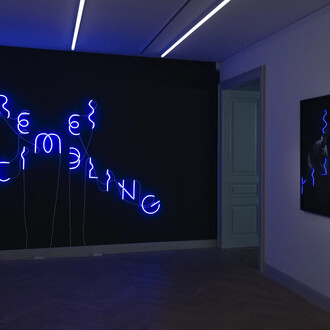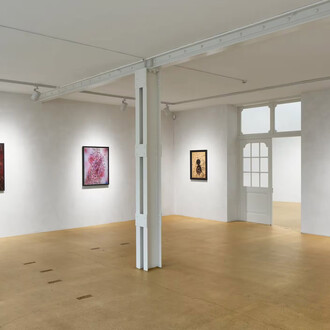Joel Shapiro, born 1941, is one of the outstanding American sculptors of recent decades. Shapiro himself defined his work as an alternative to the Minimalism of the 1960s. While he took up its design vocabulary, he reversed it by way of figurative allusions and psychological condensation into its opposite. Intentionally small and intimate, his early sculptures nonetheless generate an enormous spatial tension.
Floor Wall Ceiling, the title of this exhibition, is based on the fact that Shapiro’s sculptures utilize the entire available space: They do not merely stand on the floor, but often use the wall as their base or hang from the ceiling. Shapiro is not looking for the effect of a mobile; rather, he is interested in how far gravity plays a part in the work and regulates the position and cohesion of its individual elements.
The exhibition focuses on three important moments of Shapiro’s work. First of all, a selection of his famous early floor sculptures will be on view, which show the transition to his more representational works. Shapiro chose and masterly dealt with the possibilities offered by classical bronze or iron casts. A second chapter deals with the wooden reliefs created between 1979 and 1980, whose concise statements challenge the perception of viewers in quite a different way. Here, Shapiro combines simple pieces of wood into complex, space-containing objects, no longer cast in bronze but painted in colour and, thus, given an additional dimension. In his most recent works, Shapiro reverted to these reliefs as he once again created works made of wood, loosely combined of laths and slats. Some are mounted on the wall, others are hanging from the ceiling, but both show a playful dealing with the rather plain material, which he brings alive with some few gestures and by painting them.
Shapiro intentionally leaves open whether these works are representational or abstract, because he is interested in the formal ambiguity they are given by the space in which they are placed. Float, a large-sized work, in which elements freely floating in the space allotted them are brought into relation to each other, goes farthest.














